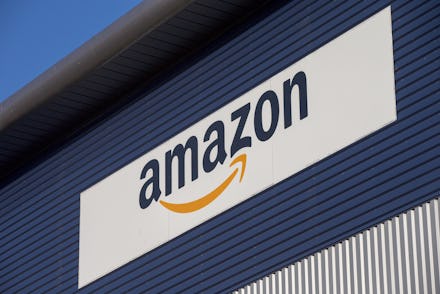Even tiny Amazon orders come in gigantic boxes. That may finally change.

If you've ever browsed or used the #amazonpackaging hashtag on Twitter, you might be delighted Amazon's latest packaging waste news. Beginning September 3, Amazon sellers will receive a penalty if they don't follow guidelines that reduce packaging waste. While the move may be about money just as much as, if not more than, sustainability, it's sure to at least ease some shoppers' frustrations with receiving their items in packages that are far too large.
These guidelines, introduced last year in a PDF titled 'Amazon Frustration-Free Packaging Program Certification Guidelines,' aim to reduce packaging weight, shipping costs, and packaging waste. The program requires vendors to adhere to one of three different certification tiers while also protecting the product during delivery. Most, if not all, of the packaging should also be recyclable.
These requirements have been a long time coming; complaints about Amazon's excessive packaging have existed for years, with many people asking why these ridiculously large boxes are necessary for the smallest of items. With climate change staying hot on people's minds, Amazon has more incentive than ever to work on better sustainability practices to improve the company's image. Last year, Amazon announced that over five billion items were shipped during 2017 — and that's only counting Prime shipments. And Prime Day 2018 alone sold about 100 million products. That's a lot of cardboard and packaging materials.
According to Engadget, sellers initially had until August 1 to make these changes, but the company has decided to extend the deadline to September to ensure everyone has a chance to make the necessary adjustments.
"At Amazon, it’s our mission to be the world’s most customer-centric company," stated the guidelines. "[W]e continue to raise the bar by providing customers with what they want: minimal, protective and functional packaging."
The guidelines also note that better packaging will reduce shipping costs and time. Smaller boxes means more packages can be fit into a delivery truck all at once. If a product is already well-packaged in its own box, the new guidelines encourage shipping it as-is without shoving the box into another box.
"By optimizing packaging for Amazon fulfillment and eliminating unnecessary package marketing features," adds Amazon, "Vendors can reduce waste, enhance sustainability and realize cost savings."
The packages must fall into one of three tiers. The first tier is the item in a well-fitted package or its own packaging. The second tier involves multiple items packaged by the vendor that does not require another, larger, Amazon 'Overbox' to squeeze into. The third tier uses the Amazon Overbox, but is packaged by the vendor and doesn't require Amazon to prep it beforehand.
All of the tiers requires the packages to be recyclable, easy to open, and protective. According to the Engadget report, vendors will be "subject to a $1.99 surcharge" as a penalty if the packages fail to fit in any of the tiers.
Not everyone is pleased with the changes. Mashable commended Amazon for attempting to reduce waste rather than strictly relying on recycling, especially since the U.S. is struggling to find places to recycle at all. But the site pointed out that the packaging guidelines could put a costly burden on Amazon vendors while the giant company reaps the savings.
Amazon offers a mere $1 in savings to sellers for packages that do meet the guidelines, but shipping costs often reach beyond that price. There appears to be little the vendors can do to speak up, however, and there have been reports of Amazon treating its third-party sellers poorly in the past.
Small sellers aren't the only target for Amazon's packaging overhaul. The company has also asked manufacturers to reduce extra box space and filler materials in their packaging as well, reported CNET, prompting them to sell more bulk items rather than individual products.
Buyers can also do their part in reducing packaging waste by looking into Amazon's Second Chance program. The program details how to recycle all types of Amazon packaging, encourages trade-ins and device recycling, product support and repair, item rentals, and purchasing refurbished products.